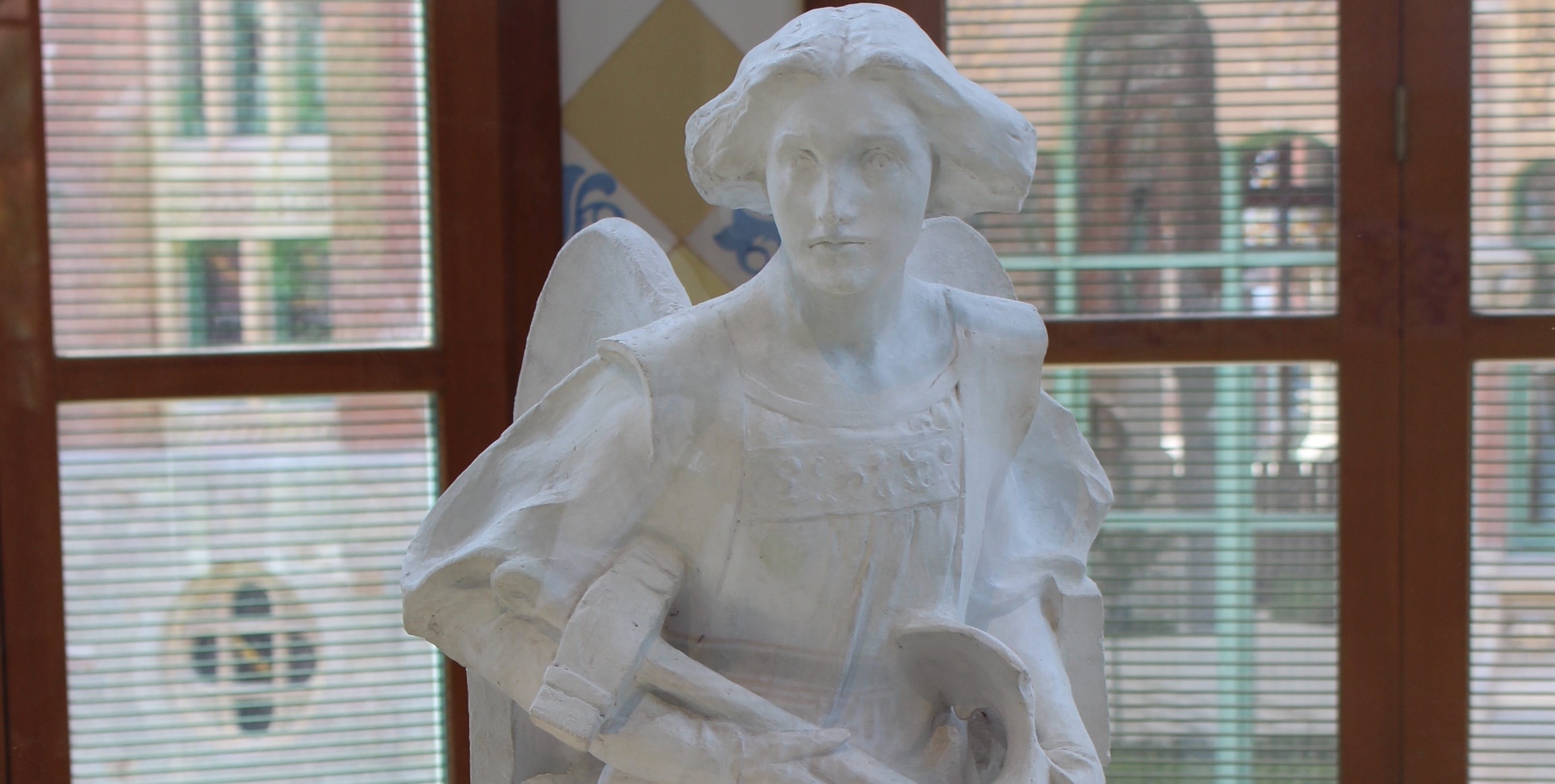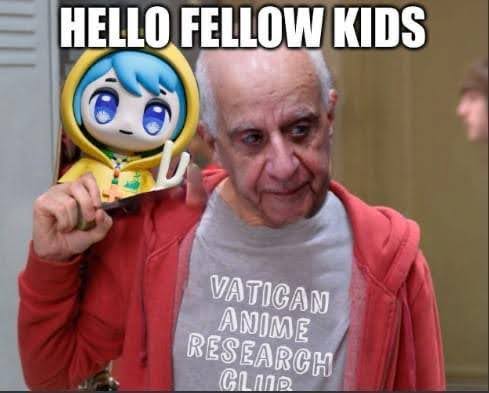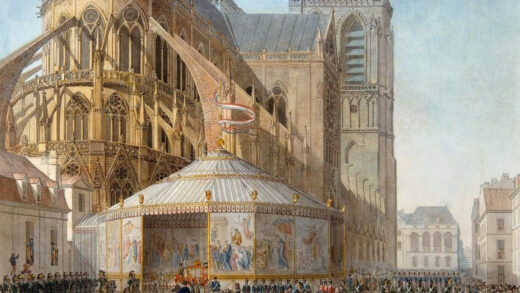The reaction from Catholic circles to the Vatican’s mascot was remarkably varied. Two factions emerged: dedicated supporters of “Luce” and staunch opponents. The starting point was the assumption that young people are difficult to engage with a message that may feel beyond their reach; instead, they expect content tailored to their everyday life. Did this innovative approach prove effective?
Ahead of the upcoming Jubilee Year 2025, on 28 October, the Vatican unveiled a new mascot named Luce. “Luce,” meaning “light,” is intended to symbolise the mission of drawing younger audiences closer to the Church. Archbishop Rino Fisichella, the primary organiser of the Jubilee, expressed hope that this character would help the Vatican engage with “popular culture,” as highlighted by the Catholic News Agency.
Luce is depicted with blue hair and large, glistening eyes, a rosary hanging around her neck. She wears a yellow raincoat with the Jubilee 2025 logo, holding a pilgrim’s staff, and her mud-spattered boots symbolise the hardships of pilgrimage. In Luce’s eyes, one can also discern a shell motif, alluding to the Camino de Santiago — one of Europe’s most significant pilgrimage routes leading to the Cathedral of Santiago de Compostela, where Saint James the Apostle is believed to be interred. The Saint James shell, used by pilgrims for centuries, represents a spiritual journey and persistence in the pursuit of a goal.
Luce’s official debut will take place at the Lucca Comics and Games festival in Lucca, marking the Vatican’s first-ever booth at this pop culture event. But should we embrace the aesthetics of popular culture in shaping the visual identity of Catholic events? How does this align with the tradition of the Catholic Church? Does objective beauty still exist, and do Luce and the aesthetics of mass pop culture fall within its realm? There is also the controversial issue of the brand and creator, Simone Legno, widely known in the world of pop art. His portfolio includes products for Pride parades, such as rainbow-themed characters and a “Pride Unicorn” line. Furthermore, the company tokidoki, which produced the mascot, recently partnered with Lovehoney, a brand specialising in adult sexual products, including erotic toys featuring tokidoki characters, as reported by CatholicVote.org. Some of their products are also available on the Polish platform “Allegro”.

The mascot itself, designed by Simone Legno, co-founder of the tokidoki brand, draws inspiration from the Japanese “kawaii” aesthetic, widely seen in anime and manga. But can this style, associated with Japanese cartoons of the ’90s, genuinely capture the essence of spiritual values? Initially designed for entertainment, this form gained immense popularity in Japan in the 1940s and ’50s. In Poland, Japanese films and cartoons captured viewers’ hearts thanks to Polonia 1 and RTL7, embedding themselves permanently in many Poles’ childhood memories. Moreover, choosing an aesthetic inspired by Asian culture is hardly surprising, given that this continent is one of the most dynamically growing regions for Christianity today — a fact frequently highlighted by Pope John Paul II in his apostolic exhortation Ecclesia in Asia, where he stated that the Church’s future lies in Asia.
Still, is this style rooted in pop culture the right medium for conveying spiritual ideas? Where is the boundary between the sacred and the profane? In the pursuit of attracting younger audiences, might we be losing the essence of what is truly important?
Initially, criticism around the new Vatican mascot, Luce, focused on a concern that the character might resemble “elementary school girls” depicted in certain anime genres, often in a way that is, to put it mildly, inappropriate. Yet this argument seems absurd. Should we also condemn Baroque aesthetics and the painting style of Anthony van Dyck, whose works may evoke the “Rubenesque forms” of his master, Peter Paul Rubens? The answer is clear: such a philosophy would inevitably lead us to absurdity.
Another controversial point became the mascot’s name, “Luce,” which some associate with “Lucifer.” However, as can easily be verified — even on the English-language Wikipedia — “Luce” is a common female name in Italy and France, with variations like Lucia, Luci, Lucy, or Luke. So why does the name “Luce,” meaning “light,” stir controversy? Although many associate it with Lucifer, it could just as easily refer to the “Light of the World.” In a world inundated with content yet poor in high culture, few would understand an 18th-century allegory of Hope, depicted as a woman with an anchor and eyes lifted towards heaven.

It is also worth considering how “Luce” fits into the strategies that the Church has been employing to reach young people for several decades. Her appearance — a yellow coat, large eyes, and a slightly childish face — will not appeal to every audience group. But would the Rococo-style works of Johann Georg Pinsel have any better chance of reaching the young? Certainly not. Reactions from Catholics to “Luce” reveal that the mascot has divided the community into ardent supporters and opponents.
Within conservative and traditionalist circles, two camps have emerged: staunch supporters of “Luce” and firm opponents. The starting point was the assumption that young people are hard to engage with a message that is beyond their reach; instead, they expect content adapted to their daily lives. Has this innovative approach been effective?
The Church has never followed the spirit of the times but instead has inculturated faith. This inculturation has only involved integrating Christian teachings and values into local cultures and traditions. An example of someone who successfully introduced this kind of adaptation into culture was the Italian Jesuit missionary Matteo Ricci (1552–1610), who adapted Catholic teaching to Chinese cultural and linguistic traditions by translating religious texts into Chinese, celebrating Mass in their language, and using Chinese symbolism in a Christian context. So, is the mascot “Luce” such an inculturation? It is not linked to high culture like Ricci’s, but rather to pop culture — a culture inherently simpler and lower in nature. I leave the answer to this question to the reader, though it seems fairly obvious.
The Dicastery for Evangelisation of the Vatican likely assumed that young people want a message that is adapted to them. Yet the Church has not merely provided people with a message tailored to them, but, above all, one that led them toward perfection. In such a simplified form, it is impossible to convey the essence of Christian hope, as it is a matter too profound and complex to discuss in such a form tailored to expectations. The Christian Church and culture must transcend expectations. Anyone knowledgeable about upbringing — and indeed, leading people to salvation is a form of upbringing in virtue and perfection — knows that to raise a person, one must set goals that exceed their capabilities. The goal should not be to adapt perspectives or the message itself, but rather to provide tools for achieving the “potential” being offered.
Using such communication methods, the Church makes it difficult to fully and accurately convey the divine in its full glory and significance. It is thus a secularisation and infantilisation of the message and of what the Church has to say. Going down this path, as Jordan Peterson suggests, “no one will be interested in you.” After all, those who approach the Church and participate seriously in community life do so not because they “saw a cool doll.” Their attachment derives from a commitment to the Church’s purpose, mission, and endeavour — the mystical body of Christ.

Initially, the entire concept of a mascot for the Jubilee Year appeared to be an attempt to draw the attention of the “younger audience” to something trendy and attractive, akin to World Cup or Euro mascots. Yet I wonder if there really is a converted Catholic who discovered their faith through this mascot. Indeed, if we offered young people tradition, truth, and zeal, which they yearn for, they would undoubtedly come to the Church on their own. But was this mascot directed primarily at those already connected to the Church? The reaction across the Catholic internet seems to confirm this — a wave of memes, fan art, and fervent comments defending “Our Luce” showed just how much church circles needed to “wedge a foot in the door” of mass culture. But is this approach truly the key to attracting others to the Church?
Reflecting on the role of the mascot „Luce,” it is worth noting that its aesthetic follows a different model than traditional sacred art. Critics of this initiative often highlight the requirements for church art, failing to recognize that this mascot does not serve an artistic purpose but rather a marketing and educational one.
Its goal was to symbolize the jubilee slogan, „Pilgrims of Hope,” intended to relate to spiritual growth and the discovery of faith. „Luce” also aimed to establish a dialogue with younger generations and to spark interest in the Church.
The „Luce” mascot indeed turned out to be an initiative that activated the Catholic part of the Internet, sparking both positive and negative reactions. For some, „Luce” has become a symbol of contemporary Catholic presence in mass culture, something „ours.” Such initiatives may act as a bridge for some, linking faith with new forms of communication – yet, should they be in this form? However, it is worth considering whether it is appropriate for the virtue of „hope.”
In this context, the question arises as to whether the Church should adopt the aesthetics of mass culture. Traditionally, the Catholic Church has developed specific principles for sacred representations, aimed at conveying profound spiritual messages and expressing a form of beauty that encourages reflection and prayer. Therefore, if a mascot is intended to symbolize the message of the 2025 Jubilee Year under the theme „Pilgrims of Hope,” does it not, by extension, also symbolize hope itself?
For some, however, the use of a pop-cultural style may imply a trivialization of the virtue of hope — fundamental and profound alongside faith and love. Purists and art historians might also raise objections based on the principle of decorum (for example, figura non haueua decoro), applied to the proper depiction of figures in sacred art (including by G.P. Bellori to describe the inappropriateness of certain Caravaggio paintings). According to this principle, Luce could be seen as inappropriate. This principle emphasizes the depiction of figures and themes in a way that highlights their spiritual nature, so that they serve in teaching the truths of faith.
Was the chosen artistic form or technique thus inappropriate? Perhaps. However, it’s challenging to imagine a modern mascot representing a pilgrim or an allegory of Hope modeled after works by sculptors like Augustus Saint-Gaudens or Frederic Watts. Nevertheless, it is worth noting that the jubilee event is aimed not solely at children but primarily at teenagers, students, and young adults — so, what form should the Vatican have chosen to depict the virtue of Hope instead of a girl with blue hair?
Can this form reach a broader audience? It is hard to judge, but it must be admitted that „Luce” has become a phenomenon in the broader Catholic „multiverse,” proving far more interesting than the „legendary” holy water bottle with a screw-off head of the Virgin Mary. Recently, however, information has surfaced that tokidoki, the company responsible for the mascot, also produces sex toys in collaboration with Lovehoney. If this information is confirmed, the Vatican’s decision to collaborate with a designer whose works include themes that starkly diverge from Church morality and traditional sacred art will be a major PR tragedy, not only for the Vatican’s Dicastery for Evangelization, led by Archbishop Rino Fisichella, the Jubilee organizer, but for the entire Church.



